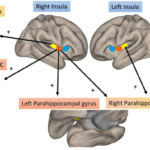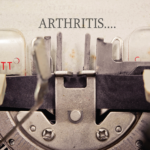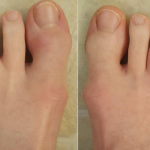SAN DIEGO—The understanding of the microenvironment in which immune cells interact with stromal cells in the synovium of psoriatic arthritis (PsA) and rheumatoid arthritis (RA) is deepening, potentially giving clues for treatments. As this understanding improves, so does the appreciation for its astounding complexity, an expert said here in a session at ACR Convergence, which also included discussions on the microbiome in PsA and a new mouse model for PsA.
Mechanisms

Ursula Fearon, PhD
Ursula Fearon, PhD, professor of molecular rheumatology at Trinity College Dublin, said that while common mechanisms of disease are at play in both RA and PsA, they differ in many aspects due to the complex microenvironment of the joint, including the presence or absence of autoantibodies, distinct vascular morphology and different cellular infiltrates, such as macrophages, T cells and B cells.
Even she finds the complexity staggering. When her lab did a single-cell analysis on the whole synovium two years ago, the researchers found 33 subclusters of cell types in the RA and PsA joint, and since then that number has increased to about 50.
“I’m just showing you this to [illustrate] how complex the microenvironment of the joint is,” she said. “And I’m amazed sometimes that we even have one therapy that works in any of these diseases.”
In images of healthy joints, RA joints and PsA joints, stark differences can be seen: the translucent synovium of the healthy joint, with just a few blood vessels nourishing it; the increased synovitis in the RA and PsA joint, with distinct vascular morphology demonstrated with straight, regular, branching blood vessel observed in RA in comparison to the dilated, elongated, tortuous blood vessels seen in PsA.
What accounts for these differences?
Through an extensive series of analyses of single cells and flow cytometry, her lab has found distinct differences in the characteristics of fibroblasts in RA joints and PsA joints. The fibroblasts dominant in PsA are associated with invasion and extracellular matrix regulation, while in RA, the dominant fibroblasts are associated with immune-cell regulation and cytoskeletal rearrangement.
When they looked at macrophages in RA and PsA, the researchers didn’t find distinct M1-like macrophages, associated with an inflammatory environment, or M2-like macrophages, associated with an anti-inflammatory environment. Instead, they found that an anti-inflammatory, an M2-like macrophage was dominant, but highly expressed a pro-inflammatory marker, CD40, which was expressed at higher levels in RA than in PsA and minimally expressed in HC, according to Dr. Fearon.1
They also found that CX3CR1 macrophages, which interact with fibroblasts in healthy joints to form a protective barrier, break down in RA and PsA.
“In RA, the protective macrophage barrier is completely depleted,” Dr. Fearon said.
She said further work should be done to understand the interactions between immune and stromal cells, to help distinguish between the pathotypes of RA and PsA and pathotypes within each disease.
“We know within RA and PsA there are different pathotypes of these diseases,” she said, “and this could have implications for their therapeutic response.”
The Microbiome

Jose Scher, MD
Jose Scher, MD, director of the New York University Psoriatic Arthritis Center, said his lab’s work on the microbiome and rheumatic disease has turned to the role of short-chain fatty acids.
Although a significant reduction in the intestinal diversity has been seen across autoimmune diseases, he said, “it might have nothing to do with the antigenic properties of microbes.”
Gut dysbiosis in PsA correlates with decreased levels of protective fatty acids, including short-chain fatty acids, and short-chain fatty acids expand regulatory T cells in the gut and have been found to prevent inflammatory bowel disease, he said.
Levels of butyrate, a short chain fatty acid, are reduced in patients with RA, and a deficiency of butyrate-producing microbes in the gut has been seen in ACPA+, erosive RA patients, researchers have also found.
A stark reduction in butyrate levels has been seen in patients with psoriasis, right as they progress to psoriatic arthritis, more recent work has found.2
“Maybe you don’t need microbes after all,” Dr. Scher said. “Maybe all you need is short chain fatty acids to modulate systemic disease.”
Short-chain fatty acids mitigate osteoclast-mediated arthritic bone remodeling in a PsA mouse model, according to recently published work.
Early results out of his lab suggest that butyrate in the gut is decreased among those with new-onset RA who do not respond to methotrexate and that butyrate might help improve the methotrexate response, but work on this is continuing, Dr. Scher said.
“Exploiting the microbiome may be considered to enhance the effective initiation of anti-rheumatic drugs and as a potential precision medicine strategy,” he said.
A More Complex Mouse Model

Christopher Ritchlin, MD, MPH
Christopher Ritchlin, MD, MPH, professor of medicine at the University of Rochester, discussed a new mouse model developed in his lab that is able to recapitulate the characteristics of psoriatic arthritis of individual patients. Such an approach, he said, could overcome limitations of existing PsA mouse models, in which the wide-ranging disease characteristics can’t be represented.
“They really didn’t capture this patient diversity and complexity which is so essential to understanding this disease,” he said.
A scientist in his lab suggested injecting the NSG-SGM3 transgenic strain of mouse, designed for improving engraftment of human leukemia cells, with PsA patients’ peripheral mononuclear cells and sera. They found a startling similarity between the phenotype of the mouse and the patient.
“If the patient only has psoriasis, the mouse only gets psoriasis,” Dr. Ritchlin said. “If they have non-erosive PsA, the mouse gets non-erosive PsA. If they have erosive PsA, the mouse gets erosive PsA. And they have dactylitis the mouse gets dactylitis.” His lab has not yet looked at axial PsA, but plans to do so.
They found the arthritis phenotype is induced using only PBMCs, and when both serum and PBMCs are injected, the psoriasis is induced as well.
One of their observations with this model is that IL32 and CXCL14 production by CD8 + T cells is significantly increased in the synovia of these “hu-PsA mice.” They also found that anti-CD8 antibodies blocked development of arthritis.
“We’re very excited about this model because we’re now looking at treatment of non-responders, and we’re injecting these mice,” he said. “And we’re finding the mice are developing psoriasis and arthritis. And we’re really honing down on what the pathways are in those patients that are driving non-response.”
 Thomas Collins is a freelance medical writer based in Florida.
Thomas Collins is a freelance medical writer based in Florida.
References
- Culemann S, Gruneboom A, Nicolas-Avila JA, et al. Locally renewing resident synovial macrophages provide a protective barrier for the joint. Nature. 2019 Aug;572(7771):670–675.
- Paine A, Brookes PS, Bhattacharya S, et al. Dysregulation of bile acids, lipids, and nucleotides in psoriatic arthritis revealed by unbiased profiling of serum metabolites. Arthritis Rheumatol. 2023 Jan;75(1):53–63.



